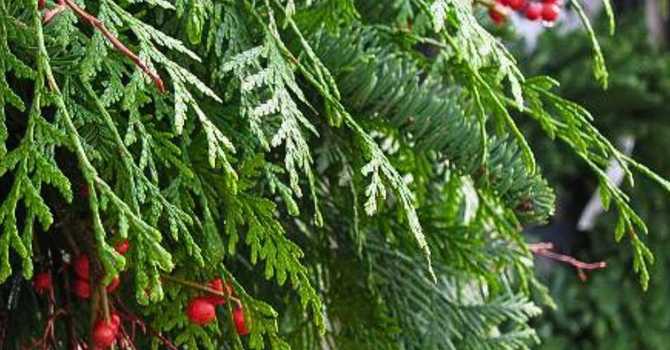
In Chilliwack, we’re lucky to live in a zone 6 climate.
But what if you want to grow something meant for warmer zones? While zone 6 can handle some chill, many plants need extra care to survive through winter. With some preparation and protection, you can enjoy tropicals, tender perennials, and even exotic foliage plants year after year. Here’s a guide on keeping popular “tender” plants safe through the winter, allowing them to thrive come spring!
Annuals: Extending Their Life
Many annuals, like fuchsias, lantanas, and angel trumpets, can survive winter with a little TLC. When nighttime temperatures fall to 4-5°C, bring them indoors. Strip the leaves, place them somewhere with some light, and keep them at a stable 5-10°C. Just water enough to keep the soil from drying out completely. Once spring returns and frost is no longer a concern, acclimatize them to the outdoors once again.
Colocasias
These beauties are sensitive to cold and should be brought inside when nights dip to 10°C. For potted plants, simply move them to a bright, frost-free area with temperatures around 10°C. If planted directly in the garden, gently transplant them into a snug pot with sterilized potting soil. Keep soil barely moist and return outside when nighttime temperatures stay above 10°C.
Canna Lilies & Dahlias
To overwinter cannas and dahlias, start by trimming back foliage. For cannas, cut stalks down to about 6” above the soil; for dahlias, trim to 4”. Use a garden fork to lift the tubers from the ground, brush off excess soil, and allow them to dry in a warm, dry place. Dust them with sulfur powder to prevent rot, then store in vermiculite or newspaper. Replant in spring after frost risk has passed.
Purple Fountain Grass
When nights hit 10°C, trim fountain grass down to 2” from the soil. Bring it into a bright, frost-free spot at a stable 10°C. Water sparingly, just enough to keep the roots from drying out. You can return it outdoors in late spring when frosts are no longer a threat.
Tropical Plants
Popular tropicals like philodendrons, dracaenas, hibiscus, and red bananas need to transition indoors once night temperatures dip below 10°C. Ideally, bring them inside by late September to ease the transition. Keep them in a cool area with indirect light, avoiding heat vents. Humidity can be maintained by misting foliage twice daily. Check for insects before bringing them in and use organic insecticidal soap if needed.
Mandevillas & Dipladenias
These flowering vines need warmth in the 10-15°C range to make it through winter. Trim them back to about 10-12”, place them in a bright window, and keep the soil barely moist. Inspect leaves for scale before bringing them in.
Citrus
Citrus trees enjoy cool, humid environments but need protection once temperatures drop to 5°C. Place them indoors near a bright window and in a cool room. Mist frequently to keep the humidity up, and water sparingly. A cool garage with a window or unheated conservatory works well. Return them outdoors in spring when temperatures reach 10°C.
Eucalyptus
For varieties like eucalyptus gunnii, bring potted plants into a cool garage if temperatures reach -5°C. If planted outdoors, surround it with insulating material like N-Sulate to protect it from colder snaps.
Dracaena Palms
Move these to a frost-free, well-lit spot once temperatures reach 0°C. Repot carefully if needed, water lightly, and set back outdoors in spring.
Green Banana ‘Musa basjoo’
This hardy banana can withstand winter if well protected. Once temperatures start to drop, cut off the foliage, enclose the stalks in a wire frame, and fill it with dry leaves. Wrap with poly to keep it dry. Remove protection in spring.
Windmill Palms (Trachycarpus fortunei)
These can tolerate temperatures down to -10°C once established. If planted in pots, sink them into the ground to protect the roots, tie up the leaves, and cover with N-Sulate for added warmth. Move back out in spring.
Tender Water Plants
Bring water plants indoors in September and place in bowls for a unique indoor display. Move potted water plants to waterproof containers in bright, frost-free spaces, and return to the pond after the last frost.
Tender Succulents
Before frost, bring succulents indoors. Keep them in a bright spot, ideally near a window, and water sparingly. Repot if needed and avoid feeding until spring.
Protecting Patio Containers in Cold Weather
Container plants are more vulnerable to cold as they “lose a zone” in winter. In a cold snap, move them to a sheltered area or wrap with N-Sulate fabric, including the pot, to keep roots protected. Unwrap them once temperatures rise.
Roses
Please refer to our Rose Growing Guide for tips on protecting them during winter.
With the right care, many tender plants can enjoy years of lush growth despite Chilliwack’s winter chill. Visit our store for expert advice and tips to keep your favorite plants safe through the season. Here’s to keeping your garden vibrant, season after season!


